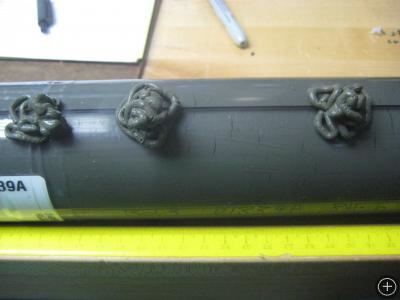The Mystery of the Exploding Cores
ABOARD THE JOIDES RESOLUTION, ON THE BERING SEA– Why do some cores explode? One of the problems we’ve had on this expedition is that some of the cores are a bit gaseous. As you go to the sea floor and below it, the pressure from the water above is tremendous. Styrofoam coffee cups dropped to the sea floor come back a fraction of their original size. Why is that?
Well, the reason is the pressure forces the gases to decrease in volume, and Styrofoam cups are full of pockets of air. That same air insulates your coffee from the air in the room, and keeps it warm longer.
Those of you who know about Boyle’s Law should remember that if temperature stays the same, pressure and volume are inversely proportional. So assuming the temperature at the bottom of the ocean was constant, we know the pressure is really high, so any gases present are super compressed, so much so that they are dissolved into the water. Think of the gas in a can of Coca Cola. It is dissolved in the can, and held in place by the pressure. If you don’t believe me, try dropping a can of Coke on a hard floor. Just don’t do it in my house! It could get very messy. When you open the can (or it pops open) the gases lose pressure, their volume increases proportionally… and you end up with a big mess wherever you opened the can.
Now at the bottom of the Bering Sea, it happens to be pretty cold. Much colder than it is at the surface. If you know about Charles’ Law you should know that if the pressure is constant, then the volume of a heated gas will expand.
Maybe you can see where I am going with this. In a very short time, we take a core that is under tremendous pressure, in some cases full of dissolved gas, and bring it up to the surface where there is significantly less pressure and bring it up to room temperature. Think a can of Coke outside on a hot day. At least where I live, it is a bad idea to leave unopened cans of carbonated drinks in a hot car. Trust me, the interior of my second car served as a painful reminder of this until I sold her.
So that’s why the cores explode. To combat this, the technicians drill holes in the core liners (the plastic sleeves the cores are recovered in) to release the pressure. They try to minimize disturbing the core, but leaving the gases to build up volume can be explosive.

 No comments
No comments 







